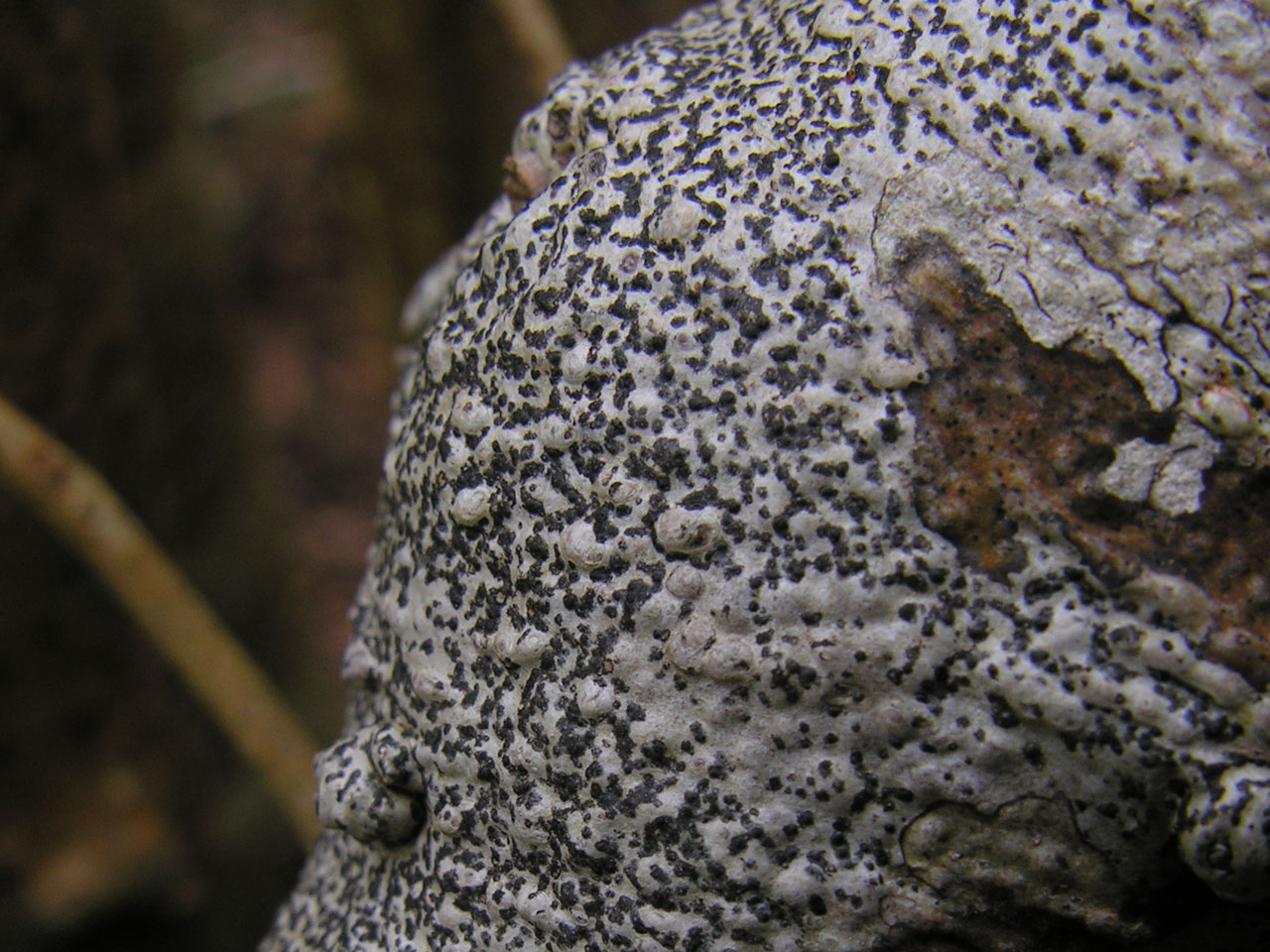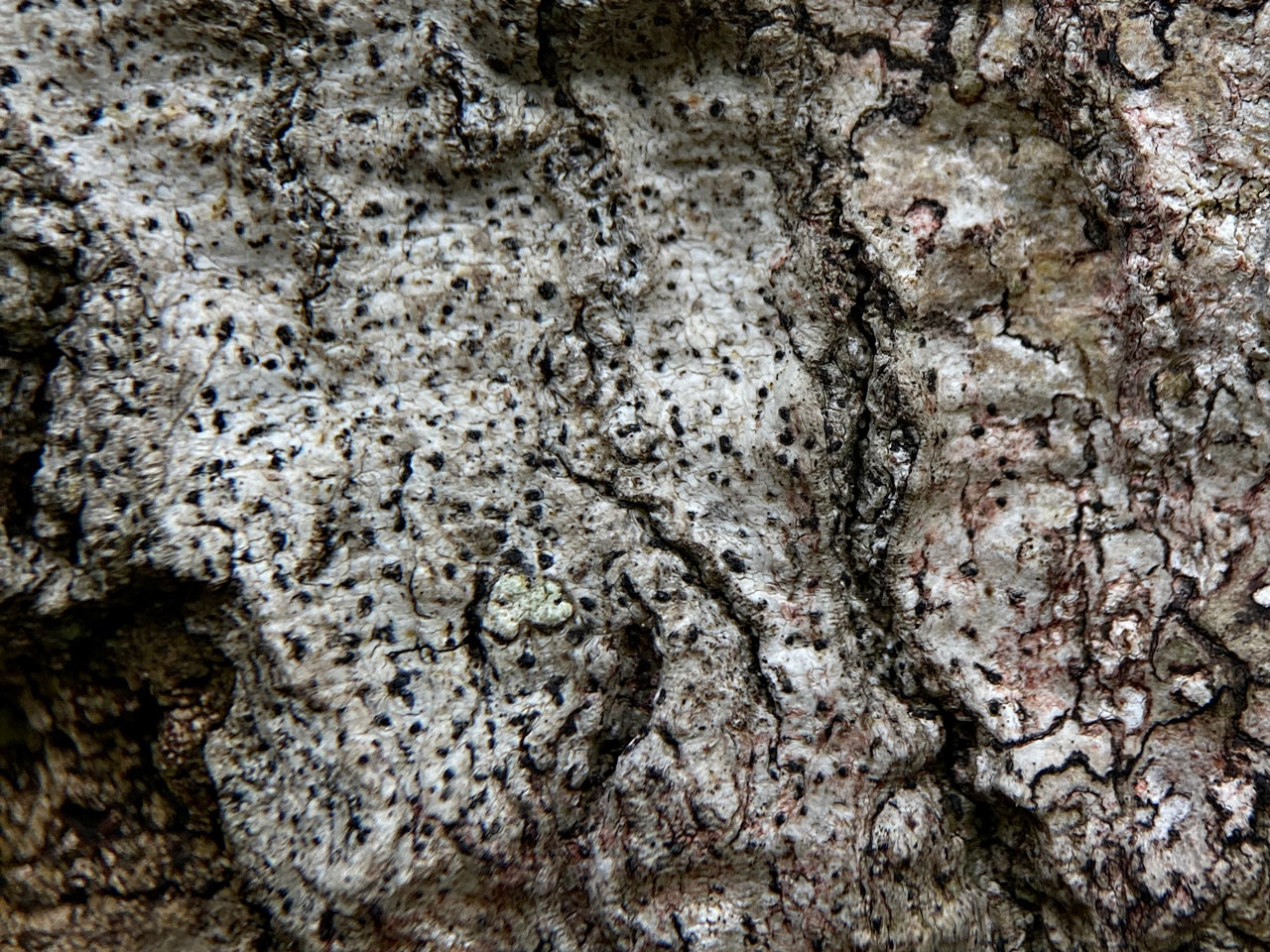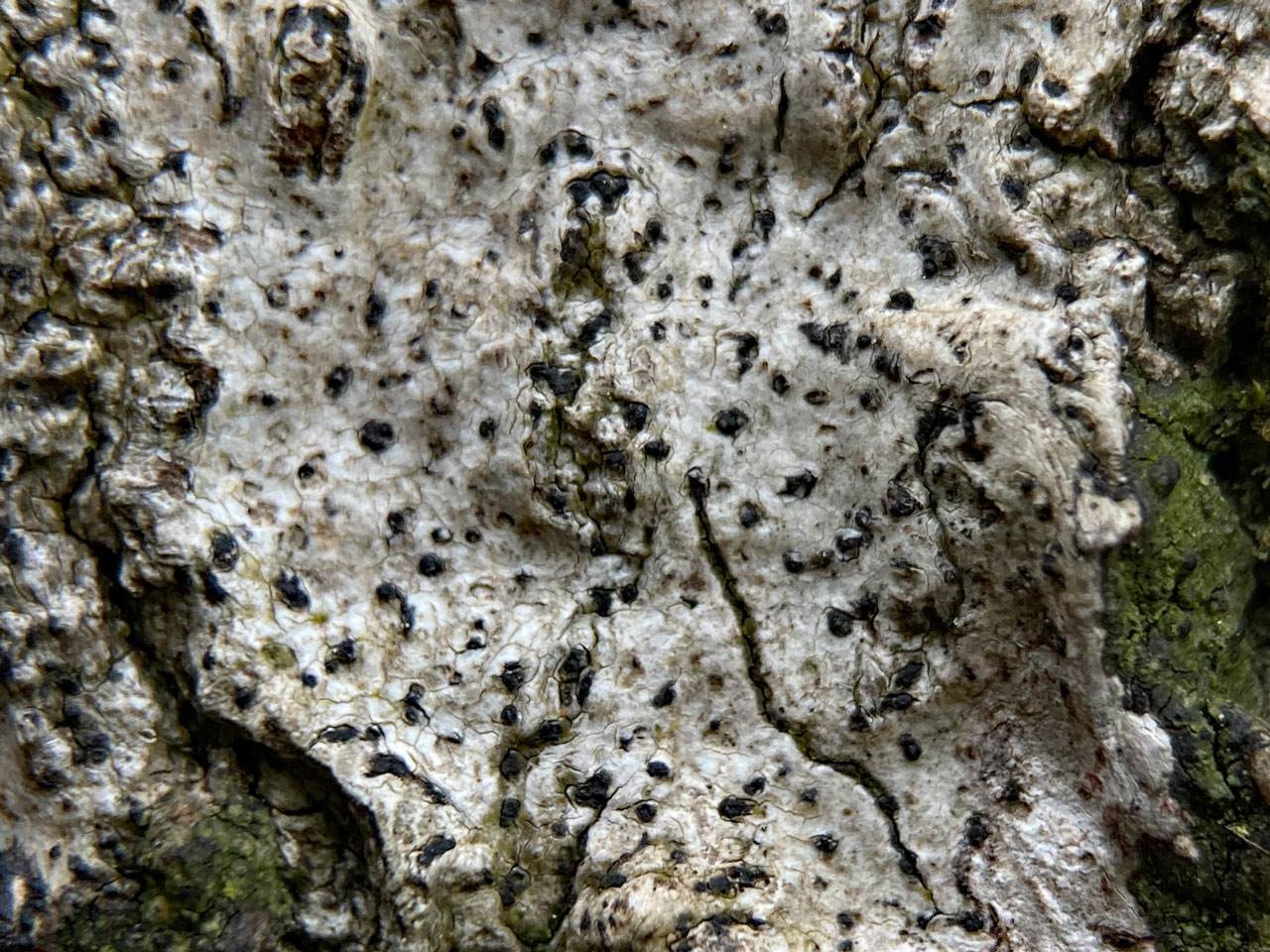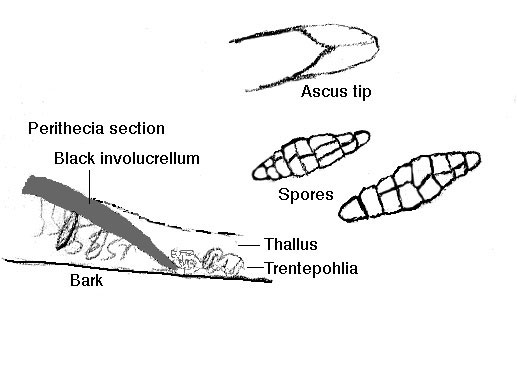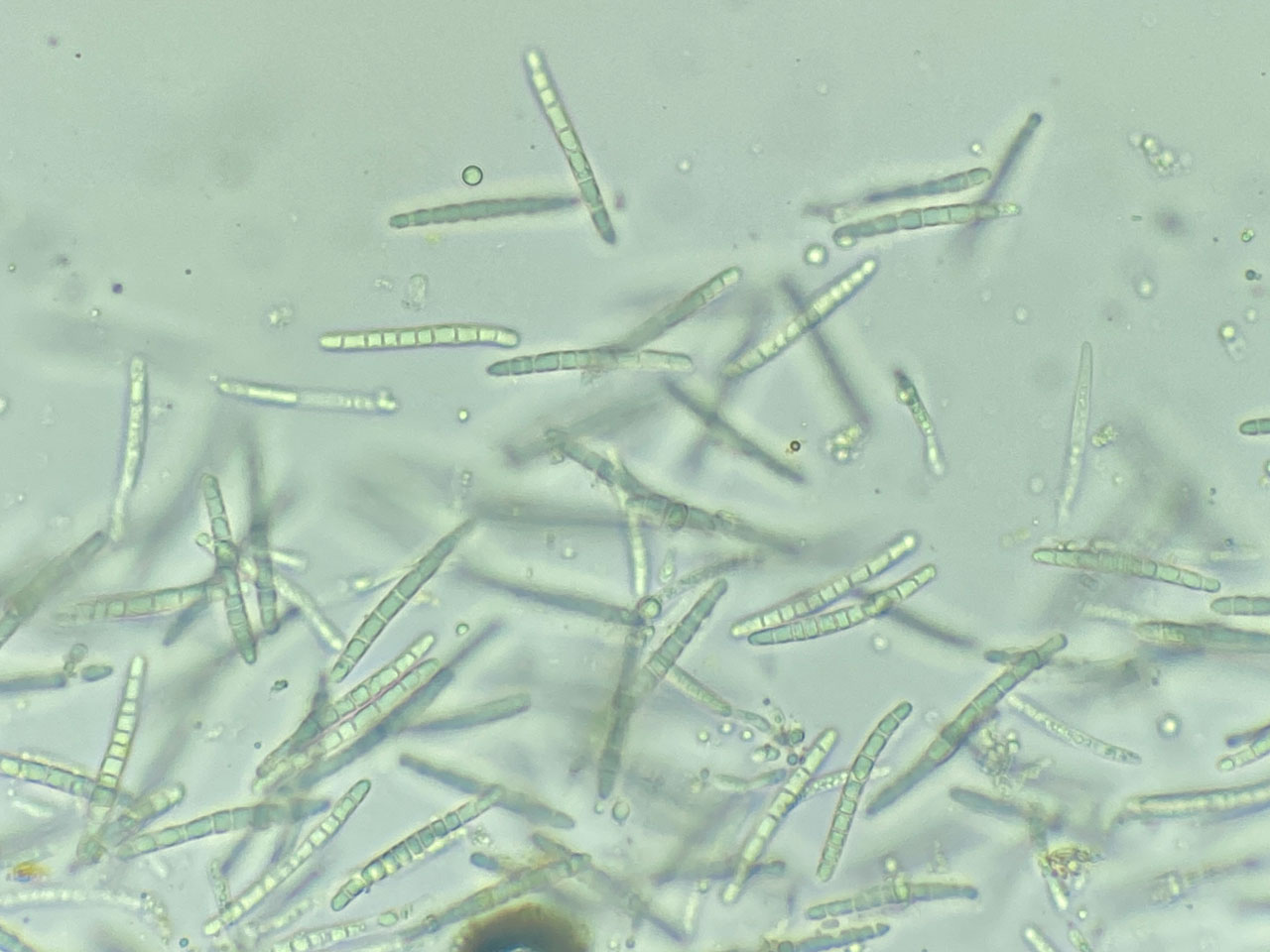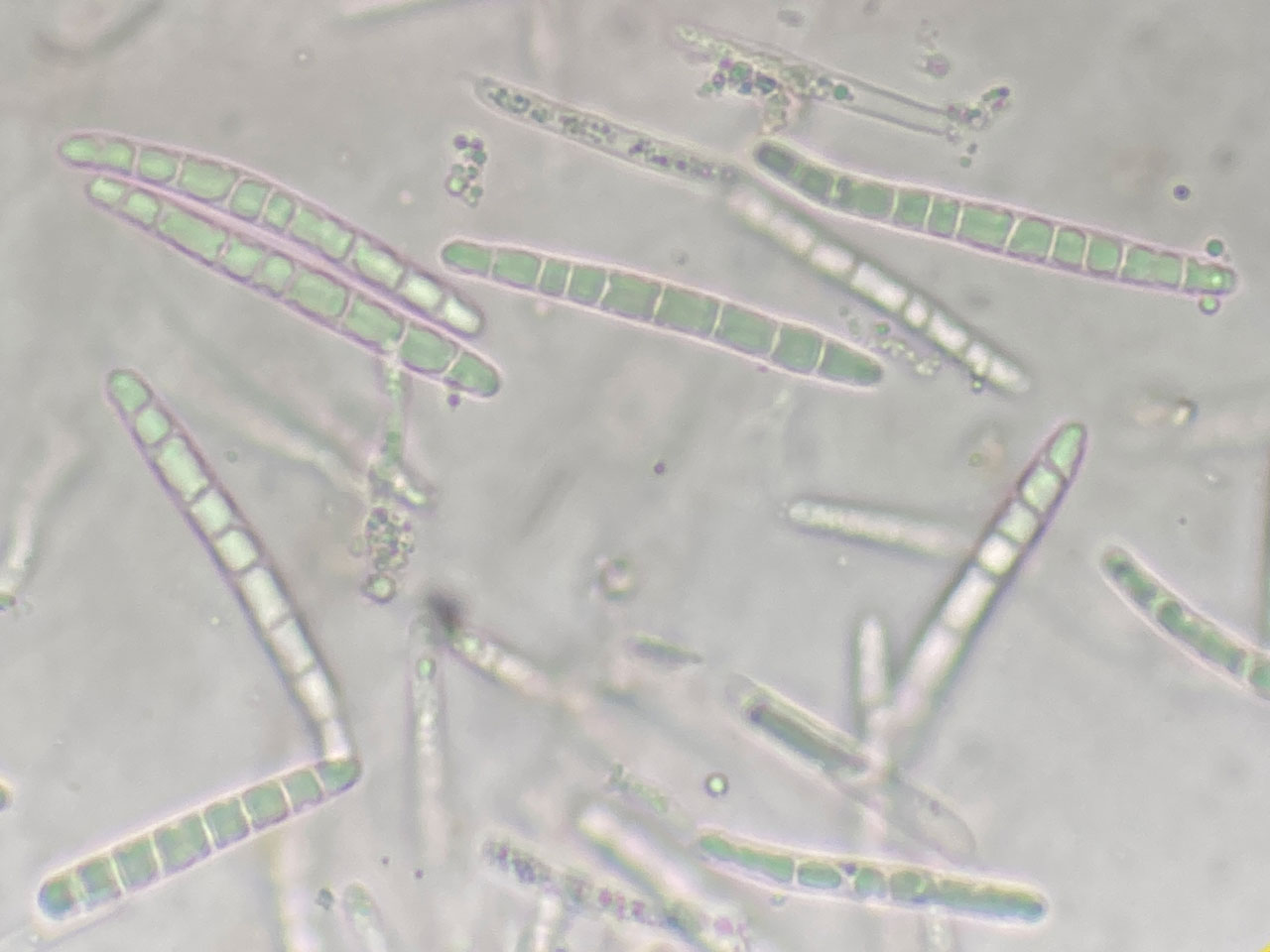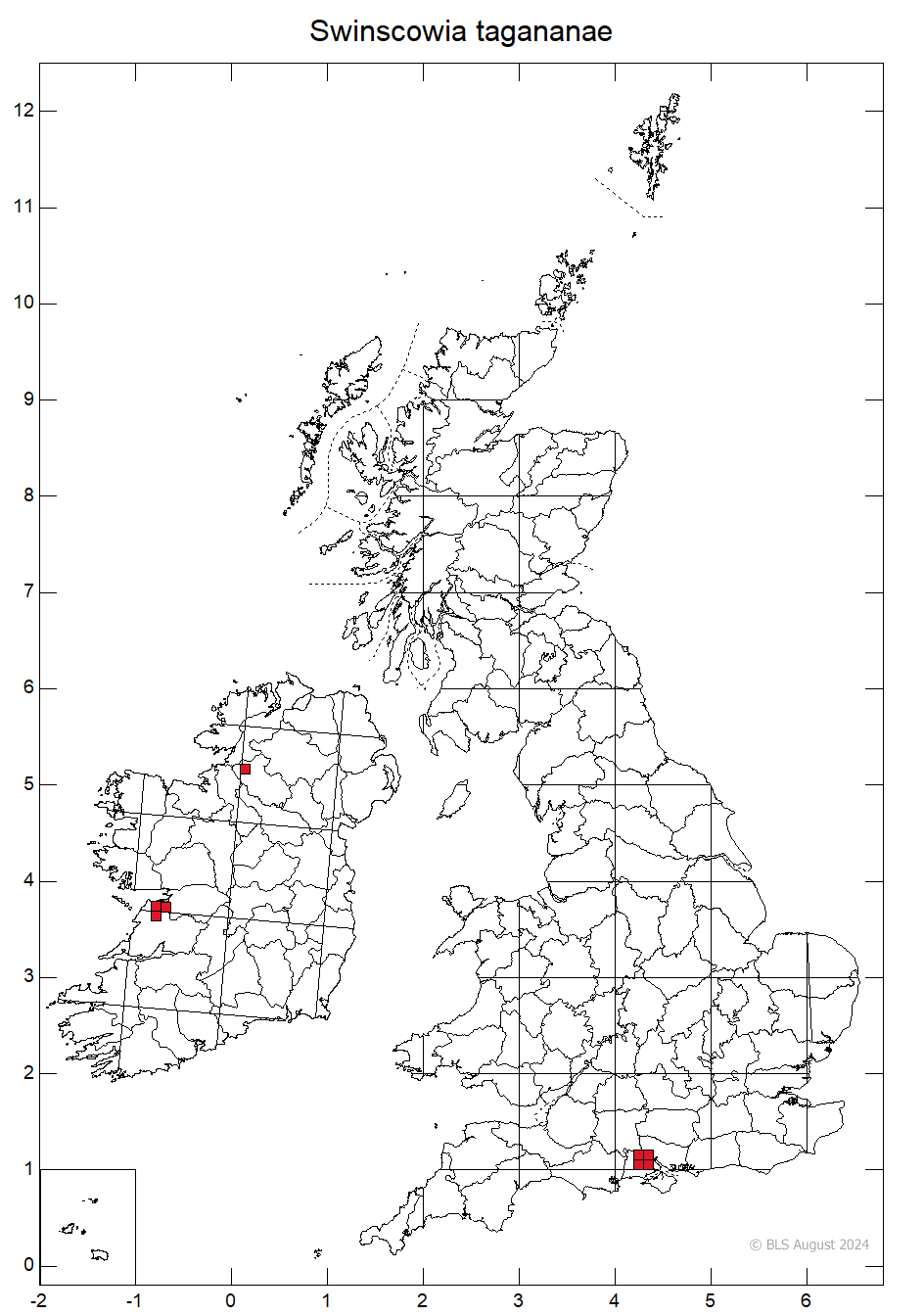A rare southern Atlantic species found in flushed rain tracks and weak wound tracks on old trees and bushes in old growth pasture woodlands in western Ireland and southern England. A difficult species to separate in the field from common species such as Anisomeridium biforme but distinctive under the microscope in the usually lateral ostiole, muriform ascospores and long (36–44 × 4–5 µm) multi-septate ((7–) 9–11-septate) conidia. The ascomata occurring in groups of 2–7, often in lines and the less markedly clustered conidia are suggestive of a Strigulaceae species in the field but microscopic examination is required to separate it from other Strigulaceae species with white thalli such as Dichoporis ilicina ined.
Thallus white to grey, continuous, largely immersed, usually inconspicuous. Ascomata 0.2–0.5 mm diam., circular or slightly elliptical in outline, flattened and scarcely projecting to projecting and hemispherical, solitary or often in groups of 2–7, often in lines, black and usually glossy, the ostiole usually lateral. Ascospores subfusiform to fusiform, (22–) 24.5–30.5 (–31.5) × (6–) 6.5–8.5 (–9.5) µm, muriform, with (5-) 6-7 (-9) transverse septa and (0-) 1-5 longitudinal septa. Macropycnidia 0.1–0.2 mm diam.; macroconidia cylindrical, (7–) 9–11-septate, 36–44 × 4–5 µm, each end with an elongated appendage 10–30 × 1–4 µm; microconidia 2.5–3 × 1 µm.
The ascomata with lateral ostioles appear to be unique within Strigula s. lat. and Swinscowia (see Aptroot & Van den Boom 1995), and molecular data would be helpful to confirm the position of this species. “Arthopyrenia” platypyrenia also exhibits this feature, but the ascospores are quite distinct and macropycnidia are not known. Thalli with only conidia are more frequent than fertile thalli.
On Hazel and Ash in Ireland and on old Beech trees in England, found in flushed rain tracks and weak wound tracks on old trees and bushes in old growth pasture woodlands
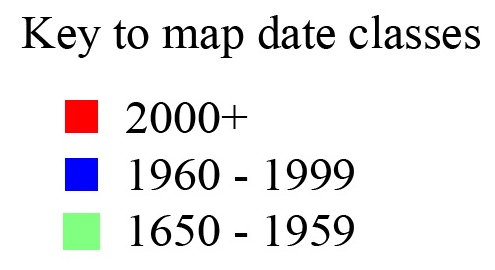
Very rare. Ireland (Clare, Fermanagh), England (Hampshire, New Forest). Could occur elsewhere in the west of Ireland and south west England.
Not fully assessed in Britain, as only recently discovered by the 2012 assessment. In Britain a candidate Red List species being so far found in a single location and management unit, the New Forest on a small number of trees.
Britain: Data Deficient and a Notable species. It was as listed on the former Biodiversity Action Plan short list but only due to its Northern Irish occurrence.
England: although listed in the former Biodiversity Action Plan it was not transferred to the English Section 41 list, as not known in England at the time.
Aptroot, A. & Van den Boom, P.P.G. (1995). Strigula lateralis spec. nov. with notes on the genus Julella (Ascomycetes). Mycotaxon 56: 1–8.
Cannon, P., Coppins, B., Aptroot, A., Sanderson, N. & Simkin, J. (2023). Perithecial genera I, including Acrocordia, Alloarthopyrenia, Anisomeridium, Antennulariella, Arthopyrenia, Celothelium, Cyrtidula, Dichoporis, Eopyrenula, Julella, Leptorhaphis, Leptosillia, Lithothelium, Mycomicrothelia, Mycoporum, Naetrocymbe, Pyrenula, Rhaphidicyrtis, Sarcopyrenia, Swinscowia and Tomasellia. Revisions of British and Irish Lichens 37: 1-59.
